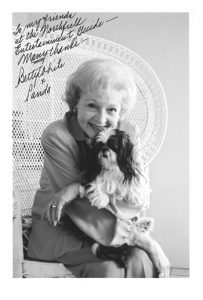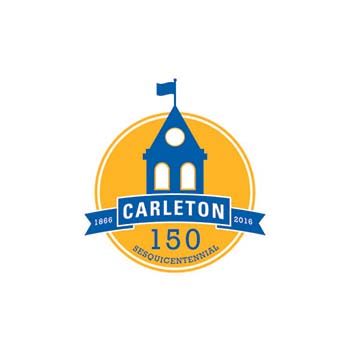 “We’ve already started three colleges and have the logs cut for four more.” An early 19th century letter from an Ohio settler to a friend in New England may have overstated the case but the establishment of educational institutions has always been a priority in this country. Carleton College in Northfield was among the liberal arts colleges that were founded by the Congregationalists, including Harvard, Yale, Dartmouth, Williams, Bowdoin, Middlebury and Amherst in the East and Carleton, Grinnell, Oberlin and Beloit in the Midwest.
“We’ve already started three colleges and have the logs cut for four more.” An early 19th century letter from an Ohio settler to a friend in New England may have overstated the case but the establishment of educational institutions has always been a priority in this country. Carleton College in Northfield was among the liberal arts colleges that were founded by the Congregationalists, including Harvard, Yale, Dartmouth, Williams, Bowdoin, Middlebury and Amherst in the East and Carleton, Grinnell, Oberlin and Beloit in the Midwest.
Charles M. Goodsell was chairman of a committee formed to look into founding a college in Minnesota so it was not surprising that Goodsell, active in Northfield’s Congregational Church, came up with an offer from Northfield. When the State Conference met at 2:30 on Oct. 12, 1866, in the First Congregational Church of Faribault, Northfield was accepted as the location of the college. Carleton will be celebrating its sesquicentennial starting with what it is calling a “town and gown” birthday party celebration of its 150 years on Thursday, Oct. 13, from 5 to 7pm on Bridge Square in Northfield. (See sidebar.)
But Carleton College was actually born on May 9, 1871. What? How can that be? Well, the college was first called Northfield College. The college’s first president, Rev. James W. Strong, a native of Vermont who became a minister in Faribault, was tasked with the inevitable fundraising for the young college. He traveled to New England and in December of 1870 was a passenger in a horse and carriage which was hit by a New Haven, Conn., train, leaving the driver deceased. Strong was badly injured and faced days of unconsciousness and months on crutches, but his miraculous survival impressed William Carleton, who had been one of his hosts in Charlestown, Mass. Carleton was a wealthy manufacturer of brass wares, such as fixtures for gas lighting, and a dedicated churchman. Feeling that Strong’s life must have been “saved for a divine purpose,” Carleton made an enormous, overwhelming and unconditional bequest of $50,000 to little-known Northfield College. The grateful trustees decided to rename the college in his honor. Thus was Northfield College reborn with its new name of Carleton College in 1871.
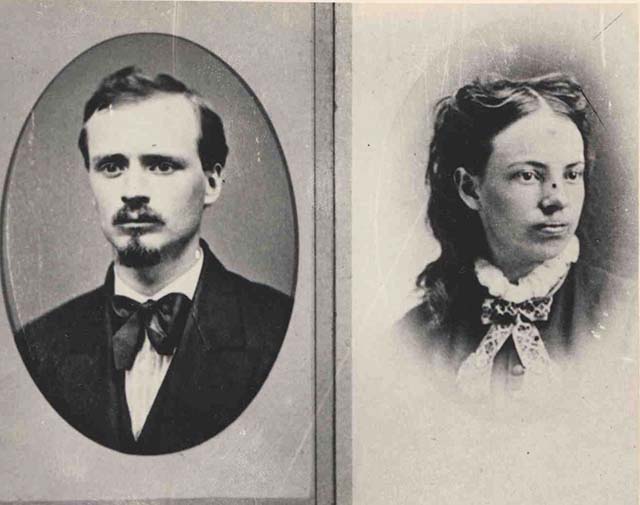
Northfield College wasn’t even a true college at first. In a time when secondary education was scarce, it started out with only students in a preparatory department. The first bachelor’s degrees were awarded in 1874 to James J. Dow of Northfield and Myra A. Brown of Monticello, Minn., with Dow giving an oration on “The Attainment of True Manhood” and Brown speaking of “The Intellectual Culture of Women.” Evidently Myra thought well of James’ true manhood and James appreciated Myra’s intellectual culture, for they married on Christmas Day six months after graduation.
As a temporary measure, the first structure housing Northfield College in 1867 was a ramshackle former hotel called the American House, which John North had constructed in 1856, a year after founding Northfield. The first campus building was completed in 1872 and named Willis Hall in 1873 after Susan Willis, who had donated $10,000 to pay off the mortgage. (She became benefactor William Carleton’s second wife in 1875.) In 1879, Willis Hall was gutted by fire but rebuilt the next year. Willis remains the oldest structure on campus and has served in many capacities over the years, including as classrooms, library, chapel, bookstore, tea room and post office. It was the student union starting in 1954 until 1979 when the Sayles-Hill gym was remodeled into a student center. Decades of students have kept time with chimes from the Willis clock tower.
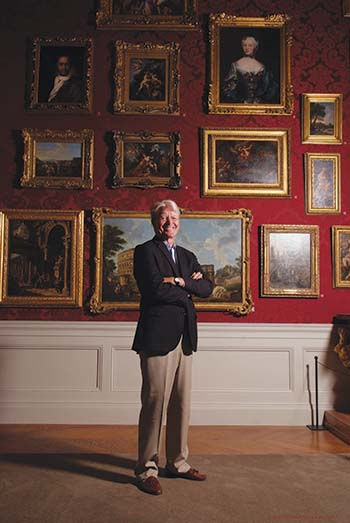
Faced with the question of how to present the story of Carleton students over the past 150 years, Carleton brought in Gary Vikan, Carleton Class of 1967 with a doctorate from Princeton in 1976, to give guidance to a class last spring called “The Art of Exhibition.” The result can be seen in the exhibit now open through Nov. 16 in the Braucher Gallery of the Perlman Teaching Museum in Carleton’s Weitz Center for Creativity. Vikan comes with impressive credentials. He was Director of the Walters Art Museum in Baltimore from 1994 to 2013, after having served as the museum’s assistant director for Curatorial Affairs and Curator of Medieval Art since 1985. Before coming to the Walters, Vikan was Senior Associate for Byzantine Art Studies at Dumbarton Oaks in Washington, D.C.
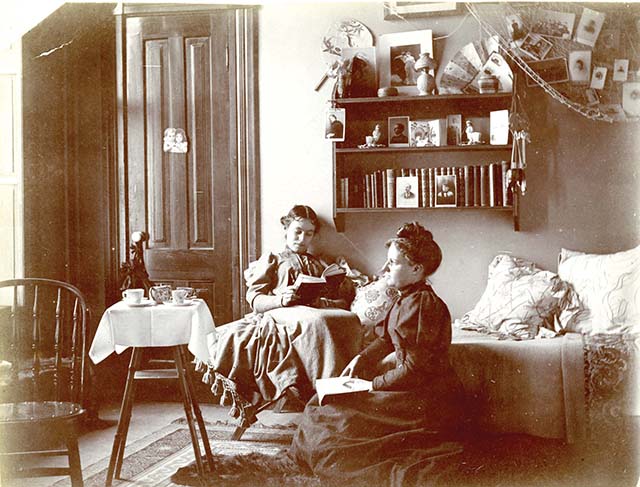
He has also taught at Johns Hopkins University. Vikan is an internationally known medieval art scholar with varied interests, including publishing and speaking on topics such as early Christian pilgrimage, medicine and magic, icons, the Shroud of Turin, neuroscience and aesthetics and Elvis Presley.
The title of the exhibition is “Independence of Thought: An Unfolding Story 1866-2016.” Vikan told me in an e-mail that his hopes for the show and for the class were “that the students would understand that an exhibition is all about experience, and feelings. And values. And AUDIENCE.” The idea was “to give face and voice to Carleton’s past, such as Ken Burns gave face and voice to the Civil War.”
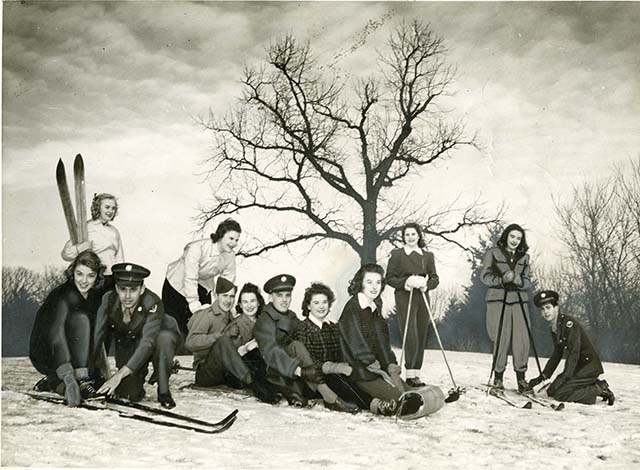
Five years are singled out to represent different eras: 1890, 1918, 1942, 1971 and 2001. Vikan said the basic layout is “governed by five large photo-murals.” The students “picked an image that they felt captured the essence of that year,” along with a page from the school paper, the Carletonian, and a double page from the Algol yearbook. The students “identified a real person” from each year and selected a text associated with that person, such as a diary or a letter. For example, for 1890, the faces of a man and young woman are shown and a letter is read in which the man describes to his daughter “a caper on campus one night to steal some ice cream.” Original photographs and scrapbooks have also been chosen to “give a sense of intimacy and personality” to that year. Also in each section will be what Vikan described as a “goldilocks,” an object to be looked at and touched, “like the chair, the bed, the porridge.”

Vikan said that the students chose the “over-arching theme for the show: a continuity of values over decades. What it means to be a Carl, whether it be 1890, 1971 or today.” Four of the students produced a “wonderful six-minute video culled from old Carleton videos, going back to the ’20s and up to 2015” with background music composed by Charles Lutvak, Class of 2019.
For years, Carleton students were able to use pedestrian tunnels connecting Evans Hall to Nourse to escape the elements. The walls became a popular repository of student artistic efforts and philosophical musings but were closed in 1988 due to liability concerns. Vikan said that the exhibit ends with a tunnel, “an evocation of the famed Carleton tunnels” in which visitors can “tag” the walls with their “reactions to the show and their thoughts about Carleton.”
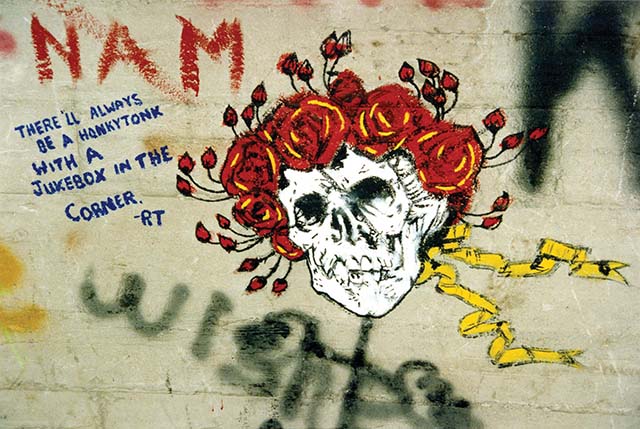
The words of the exhibit are all by the 14 students in the class, with “very few edits on my part,” according to Vikan. Difficult issues are not avoided: “A wall text and image recalls the foundation of the school on a Dakota village; another, the first Black graduate, in 1949; and another, the struggles of gay Carls as late as the ’70s.”
In addition, the exhibit includes infographics created by students in Carleton history professor Bill North’s “Carleton in the Archives” course from last spring, which “helps make sense of college history and culture across time” by way of quantitative analyses of various aspects of college life. Students in the class combed many kinds of documents and records to gather data that would reveal change over time in areas ranging from athletics to dormitories, the most popular majors to changes in the Carleton endowment. North’s students also compiled “yearbooks” for each of the years featured in the exhibition along with several digital narratives that explore aspects of the college over time.
In June of 1960, Look Magazine did a feature on Carleton’s President Laurence (Larry) Gould, for which students posed for a spoof of “undergraduate types now rife on Carleton’s campus” as shown to the left. Students in Gary Vikan’s “Art of the Exhibit” class recreated parts of this photo, as shown to the right. Among the types shown in 1960 were “the perennially egocentric BMOC [Big Man on Campus],” “the HiFi addict, whose records, turned up loud, make dorm life hideous,” the “All American Coed, who rockets around the carless campus on a bicycle,” the “Fashion Plate with umbrella,” the “Frantic All-Around Athlete,” the “Sackhound, for whom sleep is life’s greatest joy,” guitar players singing folk songs, along with Nature Boy and studious Bookie, a politico with gavel, Bridge Hounds, Young Lovers on a blanket, the Campus Belle and Modern Dancers. Courtesy Carleton College ArchivesSumming up his experience, Vikan said, “The kids were wonderful. They believe in their college and its values, and they support one another. They are smart, and I was amazed how well they write.” And for him, as a Carl from the Class of 1967, “It was pure joy to again be part of an extraordinary college.”
There will be a reception at the Perlman Museum featuring student curators and researchers who developed the exhibit on Friday, Oct. 14, from 7 to 9pm, as part of the Carleton’s 150th celebration. Vikan will speak on “The Making of a Sesquicentennial Exhibition” on Sat., Oct. 15, from 11:10am to 12:10pm at Olin Hall, Room 141.
The Northfield Historical Society is the site of another sesquicentennial exhibit called “Hometown Ties: Carleton Celebrates 150 Years with Northfield.” This exhibit, which is running until June of 2017, has been put together by Carleton College archivist Tom Lamb. Lamb said he is highlighting how Carleton is intertwined with Northfield, starting with the college’s founding largely by Northfielders.

One of the panels highlights “Citizen Carls,” including Carleton treasurer Joseph Lee Heywood and Northfield native Candace Moses. Heywood sacrificed his life when he was filling in as cashier at the First National Bank during the 1876 James-Younger robbery attempt. “Dace” or “Dacie” Moses, as she was known, worked as assistant to Carleton’s treasurer, from 1919 to 1951, and later as a circulation assistant in Carleton’s library until she retired at age 86 in 1969 in the 50th year of her employment. Over many years, the Moses house at 110 Union St. near campus was open to students at any hour. Every Sunday morning she provided orange juice, rolls and coffee. She also played cribbage with students and offered use of her phone, refrigerator and oven (for extensive cookie-baking). The Carleton Knights singing group practiced in her living room, just as the Northfield Male Chorus had done for 25 years before the 1960 death of her husband, Royal Moses (Carleton Class of 1904), who sang in the chorus. In turn, students cleaned her house, took her grocery shopping, painted her house and sent her announcements about life events after their graduation. Her only rule: no complaining about Carleton.
In 1969, Moses was given a Master of Arts Degree and told to wear it “as the badge of our gratitude that in so serious a world there can be as fun-loving and joy-giving a person as yourself.” In 1975, the Carleton College Alumni awarded her a certificate for distinguished service. She was nearly 98 years old when she died on Jan. 3, 1981, at Northfield Hospital, having been cheered by calls and letters that Christmas from Carls who she considered to be her family. The Carleton Knights sang at her memorial service at First United Church of Christ. In her will, she left her house to Carleton to be used as a home away from home for Carleton students, as it remains today.
The NHS exhibit also alludes to the rivalry between Carleton and St. Olaf colleges as the two schools try for co-existence on either side of the Cannon River. Brawls on the bridges over the river in the past have yielded to cooperation in other fields. Well, except for athletics. A basketball trophy (since 1913) and football trophy (since 1931), both in the form of a goat, are fought over annually. Both goats currently reside on Manitou Heights. The Carls will attempt to take the football “goatrophy” back from St. Olaf on Oct. 22 at 1pm at Carleton’s Laird Stadium. Carleton will have to beat St. Olaf twice in basketball this season to truly “get St. Olaf’s goat.”
An exhibit panel labeled “Building a Strong Community” focuses on how Carleton faculty, staff and students volunteer in Northfield and contribute to local organizations. “We Gather Together” emphasizes how Northfielders are encouraged to attend events on campus and “An Open Campus” notes that Carleton is available for “dog-walking, jogging and winter ice-skating.” Many take advantage of walks through the Cowling Arboretum (“the Arb”) with its 880 acres of trails.
There is a separate panel on May Fete, which grew from a simple May Day observance on a dorm lawn in 1909 into a pageant which brought visitors from far and wide to the hillsides overlooking Lyman Lakes. There they observed spectacles led by the college women involving Greek and Roman classics, orchestras (even the Minneapolis Symphony), ballets, musicals, operettas and more until its demise in the tumultuous 1960s. (One of my favorite past columns was on May Fetes in May of 2013 and next May, I will be speaking on the subject at the Northfield Historical Society.)

In June of 2010, pranksters transformed the observatory into R2-D2 (right), complete with droid sounds. Courtesy Carleton College Archives
Carleton’s Goodsell Observatory, named after the college’s founder, Charles M. Goodsell, also has its own panel. The observatory was the source of daily time signals in the Midwest for half a century. Following tradition, astronomical viewings are open to the public on first Fridays, with a couple of the telescopes dating back to 1877 and 1890. (The observatory shape inspired a prank in June of 2010 in which it was transformed into R2-D2 of Star Wars fame.)
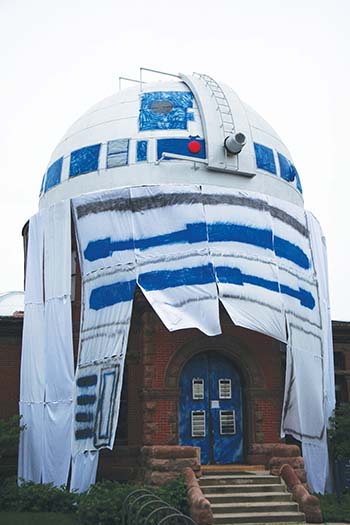
A Carleton grad singled out in the exhibit is Paul Wesley “Doc” Evans (Carleton Class of 1929) who became a nationally known Dixieland musician. He came back frequently to play his cornet at his alma mater and even to record in Northfield. He founded the Bloomington Symphony Orchestra, conducting it until his death in 1977. I was pleased to be able to feature Evans in our June music issue of 2014, drawing on information from his wife, Eleanor Evans Hattery, who now lives in Northfield. The exhibit has an audio station to hear recorded selections by Doc Evans and also by the Knights singing group.
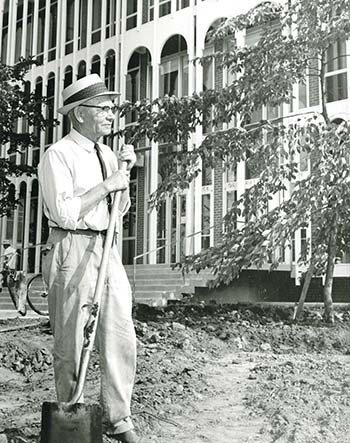
A Carleton legend named “Stewsie” was not a Carl, but he did receive an honorary Master of Arts degree from Carleton in 1964. In 1974, a book was published about his life (In Search of Fulfillment: Episodes in the Life of D. Blake Stewart by Merrill E. Jarchow). Also in 1974, the Carleton Alumni Association presented him with a Distinguished Service Award as “architect of the campus landscape.” More than any other person, “Stewsie,” as he was known by all, influenced the look of Carleton through his position as superintendent of grounds, starting on Jan. 1, 1920.
A native of Canada, Stewsie brought to his job a range of experiences as a farmer, milkman, grocery boy, hotel employee, restauranteur, salesman, recreational director and YMCA secretary. In the neglected basement of Willis Hall, he created a new bookstore, which he managed from 1920 to 1938, along with a post office and snack shop. It took him a decade to convert a former pasture into scenic Bell Athletic Field. He landscaped the Lyman Memorial Lakes and new buildings as they were constructed. Stewsie and his crew did the grading and excavating of the Upper Arb, planting thousands of trees and flowers there. The Lower Arb also felt his touch and his biographer Jarchow wrote that by 1949, “It was estimated that 200,000 wild flowers – mostly secured from farms in the vicinity – had been planted in the Arb and around Lyman Memorial Lakes.” When nurseryman A.M. Brand of Faribault discontinued selling lilacs, Stewsie acquired 1,500 pedigreed lilac bushes, more than 90 varieties. The fragrance of Lilac Hill north of lower Lyman Lake inspired legions of partying Carls (and some Oles) in the spring.
Stewsie was active in his community beyond Carleton, as well. He helped found the Northfield Golf Club, promoted an outdoor community swimming pool and contributed to many other city beautification and improvement projects. He aided the acquisition of Babcock Park and participated in the Northfield Improvement Association and Northfield Planning Commission.
Described in Jarchow’s 1974 book as “crusty, cantankerous, hard-driving,” Stewsie was still doing some work at the college at age 92. Stewsie said, “The trouble with this country is that we figure usefulness by age. There is no worse crime than requiring a man to stop working when he is 65.” He died at the age of 100 on April 6, 1982.
One of my favorite stories from the exhibit at the Northfield Historical Society is about how Carleton’s iconic Skinner Memorial Chapel “symbolizes the intimate connection between Carleton and Northfield.” Emily Skinner provided funds for the chapel as a memorial to her late husband, founding Carleton trustee, Miron Skinner. She asked that the chapel face south toward Northfield, rather than inward to the campus to illustrate the good relations of the college with the community. The chapel was dedicated Oct. 8, 1916, close to the 50th anniversary of the founding of the college.
Now, 150 years after Carleton’s founding, the college is celebrating its continuing connection with Northfield, a town whose motto is “Cows, Colleges and Contentment.”




